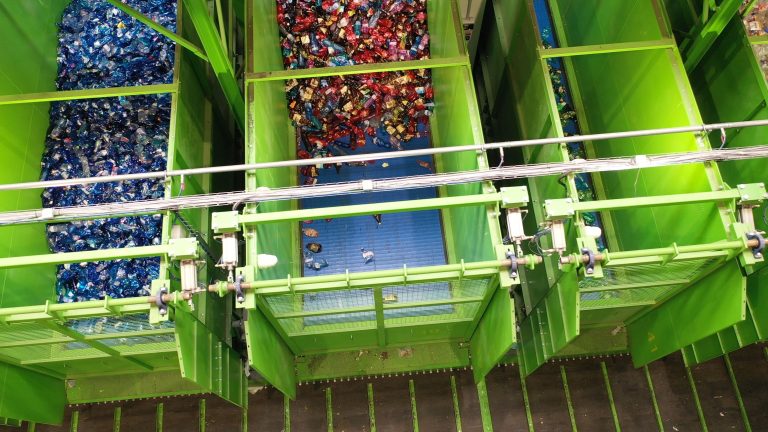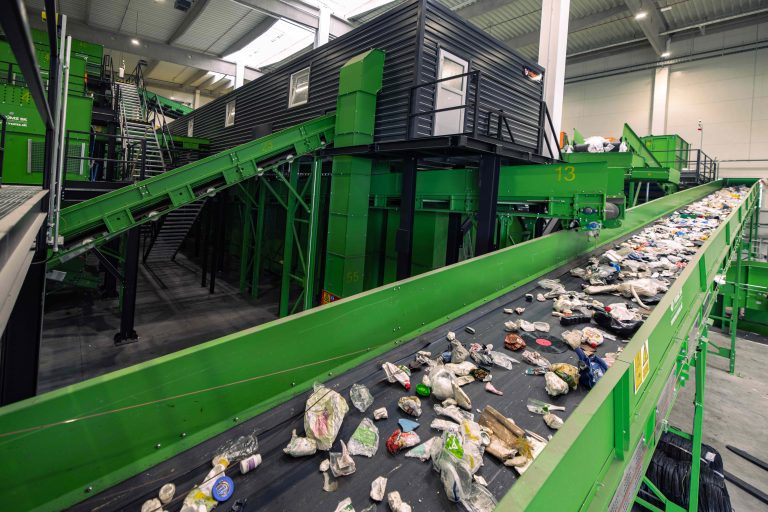Speed, reliability and automation of the sorting process. These are the advantages of the new sorting line of the municipal company SAKO Brno, which was opened in 2023. The line does not require demanding operators and can handle various types of waste.
What about the waste? This is a question that should be on everyone’s mind, as well as the search for an answer. Firstly, the amount of waste produced continues to grow, and secondly, the year 2030 is approaching, when a ban on non-environmental landfill is due to take effect. At various levels, therefore, the question of where to dispose of waste and what can actually be done with it is being addressed. One option is to reuse it.


SAKO Brno already has experience with the processing of waste from yellow containers, but modern technologies make the existing procedures more efficient. While the existing system was able to sort 5,600 metric tonnes of plastic per year, this figure can be increased to 20,000 metric tonnes in the new sorting line. The modern plant can then handle four and a half tonnes of waste in a single hour.
The line has many technical features that make sorting easier and faster. Although the line is still unmanned, the work of the company’s employees is now easier and more convenient. This is mainly due to the optical separators, which assess the composition of the plastic, its shape, colour, and position on the belt, which even the most experienced operator could not do. This information, processed by the software, is then transmitted to an air-operated nozzle, which, with a precisely targeted blast, blows a specific object from the mix stream on the belt into the hoppers or onto another belt.
All of these technologies allow the line itself to sort the different types of plastics with a purity of more than 95 percent. The original manual line sent an average of 35 percent of the loaded waste for recycling; the modern equipment on the new line, after separating out the impurities that do not belong in the yellow bins at all, is 68 percent, which is a significant difference.
And how does the sorting process actually work? The machines first tear open the packaging in which the waste is placed, after which the individual items go freely into the drum sorter, where they are separated according to size. It then passes on to the ballistic separator, where it is separated into 2D (e.g., film) and 3D commodities (plastic bottles, cups, and trays). They are then sorted not only on the basis of material composition but also by colour. The sorted and subsequently compressed material finally goes in bales to an adjacent hall, where it awaits distribution for further processing.
It is probably not surprising that the new line not only recognises individual types of plastics. In addition, it can also separate layered cardboard packaging (collectively referred to as “tetrapak”) and can also handle metals, both ferromagnetic (iron) and non-ferromagnetic (stainless steel, aluminium, tin, and other non-ferrous metals). This innovation is also being recognized by the inhabitants of Brno. Metal and other beverage containers, except glass, can be safely thrown into the yellow containers for plastic.
The hall in which the finishing line is located was inaugurated in March 2023 and is 66 metres long, 32 metres wide, and 15 metres high.

Waste management is one of the topics addressed by the Integrated Development Strategy of the Brno Metropolitan Area (BMA). The launch of the semi-automatic line reduces the proportion of waste that ends up in landfills in the area without being used. Thanks to this, its financing was also supported by the funds obtained from the ITI tool, of which over 50 million went towards the operation of the line. The investment in the new line amounted to around CZK 330 million. Twelve percent of this amount, i.e., almost CZK 40 million, was covered by a subsidy from the State Environmental Fund.
For the BMA, it is also important to know what happens next with the waste. We are therefore pleased to receive information from SAKO Brno that local companies are interested in sorted raw materials and will reuse these commodities. And since these are companies from Brno or Modřice, the carbon footprint of transporting them remains low.
The sorting line is also part of the integrated solution of the “Brno Centre for Material Recovery of Waste.”. Two other activities have been financed under this project. The first is the opening of a large-capacity collection yard in August 2023 in the Brno-Zidenice district. This yard is the largest of its kind in Moravia, is open seven days a week, and serves all Brno residents, including businesses and tradesmen. The second activity is the purchase and deployment of bins and containers for biodegradable waste of plant origin, which is gradually increasing in the streets of the city.
Register your e-mail address to receive regular updates from the Brno Metropolitan Area.